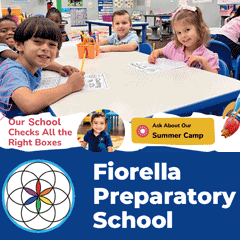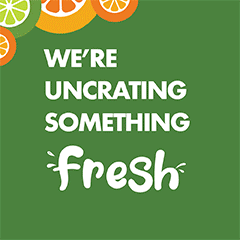Fighting Hunger, Feeding Hope
Second Harvest fills empty stomachs during the holidays—and all year long.
 The holidays are coming, which means most of us will soon be preoccupied with travel plans, gift-buying and spending quality time with loved ones. The key word there is “most,” though, because far too many of our neighbors will have more pressing concerns: specifically, how to put enough food on the table to feed their loved ones.
The holidays are coming, which means most of us will soon be preoccupied with travel plans, gift-buying and spending quality time with loved ones. The key word there is “most,” though, because far too many of our neighbors will have more pressing concerns: specifically, how to put enough food on the table to feed their loved ones.
Back in 2009, Judie Kellogg and her family were in that position after her husband, a civil engineer, lost his job. Within a year, they had to walk away from the home where their children had grown up, and finding food became a problem. “They were like, ‘Mom, what’s going to happen to us?’” says Kellogg about her kids’ response. Painfully enough, Kellogg didn’t know quite what to tell them.
It was around that time that someone at their church gave them a card for Christian HELP, which in turn is one of numerous agencies that partner with one of our region’s most respected charities: Second Harvest Food Bank of Central Florida. “We finally went down there and started receiving food assistance,” says Kellogg. “That’s how I met [Greg Higgerson, Second Harvest vice president, development] and [Dave Krepcho, president & CEO].”
That initial meeting was more significant than Kellogg could’ve guessed, because she now works alongside Higgerson and Krepcho as Second Harvest’s grocery alliance program manager, coordinating with more than 500 area grocery stores to get surplus food out to people who need it most. In other words, she’s a living embodiment of paying it forward. With the holidays approaching, now is the perfect time to learn how much Second Harvest does for our community—and how you and your family can get involved, too.
Helping Those Who Need It Most
A private, nonprofit organization, and a member of the Feeding America network, Second Harvest launched as the Community Food Bank in 1983, founded by three friends from Winter Park’s Community of Christ Church. “They met around a dining room table and had the foresight to know that a community response to hunger required them to recruit many partners outside of their church family itself,” says Higgerson. “A true community response.”
In its first year, the organization distributed 618,000 pounds of groceries to 75 local feeding programs. “Thirty-three years later,” says Higgerson, “Second Harvest Food Bank distributed nearly 60 million pounds, enough food for more than 50 million meals, to more than 500 local organizations helping people with food assistance.”
Higgerson joined the staff in 1996, and he feels privileged to have been part of a tenfold growth of service to the community in the decade since. Today, their reach is felt throughout Central Florida, bringing food to the hungry in Brevard, Lake, Orange, Osceola, Seminole and Volusia counties.
Their assistance also goes beyond food, such as the Culinary Training Program. Running 14 weeks, this service provides at-risk and economically disadvantaged adults with the skills needed to land a career in the food industry. It doesn’t cost a dime and is designed to assist students with barriers that might prevent them from success, such as lack of food, housing, transportation and other key needs.
The help doesn’t stop there, either. Other Second Harvest initiatives include a mobile nutrition program, helping the needy connect with SNAP benefits, and even disaster relief. “We are part of the Volunteer Organizations Active in Disaster group and coordinate closely with our county and state emergency management departments,” says Higgerson. “As a Feeding America member, our food bank is tied to vast corporate food resources that can be mobilized in very short order should we be directly hit with a disaster situation.”
Faces of Hunger
If you think you know what hungry people look like, think again. According to the Faces of Hunger Report 2014, which was conducted by Second Harvest in conjunction with Feeding America, 60 percent of the organization’s clients had a household member who worked for pay in the past 12 months. What’s more, 75 percent of them at least hold a high-school degree or general equivalency diploma, and 27 percent have some post-high-school education, so it’s not necessarily a lack of education that’s keeping them hungry.
The Kelloggs certainly fit those parameters when they needed a hand up. “At that time, we did everything that we could to keep our heads above water,” recalls Kellogg, “but then we were forced to sell our home at a loss, and we were pretty much left homeless at that point.”
They weren’t Second Harvest’s only clients to have underage children, either. Approximately 27 percent of those helped by the group are under the age of 18. Furthermore, 11 percent of them are seniors aged 65 and older.
Kellogg knows just how devastating it can be to find oneself in that position—and how amazing it is to finally receive help. “You lose all your material things, but you also just lose your confidence,” says Kellogg about being destitute. “It’s a scary thing, but to know that you at least could have food on the table and meet together at dinner, that’s what gave us the hope and the fight to continue on.”
Get Involved
Want to help Second Harvest with its mission? There are many ways to do so, and they’re all fairly easy. “Hunger is a complex problem,” says Higgerson, “but the solutions are simple.”
One of the first and most obvious ways is to donate money—and each dollar you send will go a lot further than you might think. “Funds are vital,” says Higgerson, “and every $1 contributed, Second Harvest can multiply the value into $9 worth of groceries.” It’s hard to beat that sort of return on an investment.
Food donations are also key, but keep in mind that Second Harvest does limit the sort of groceries they’ll accept, as well as when and where you can drop off such donations. Volunteers are also always needed. For a full list of items, restrictions and drop-off locations, as well as ways to volunteer, visit their website at FeedHopeNow.org.
After all, the holidays are coming, and there are few better ways to feel good throughout the season than by doing good for someone else. “I often think of the story of one of our staff,” says Higgerson, “who was so touched by a young mother’s desperate phone call at the holidays that she decided to personally and anonymously drop off a food basket and a few used toys to help brighten their day.
“As she tried to scurry off the front porch, however, the door opened, and a young, red-headed girl ran outside. As [the staffer] explained her presence to the child’s mother, she watched the girl run right past the toys and pull a juicy apple off the top of the basket. ‘Mama! An apple!’” she said. “‘Can we eat this right now?’”
For Higgerson, that story captures the essence of why Second Harvest exists. For the rest of us, it should be a rallying cry—because it’s hard to have a happy holiday when children are going hungry in your own backyard.
Published and copyrighted in Orlando Family Magazine (November 2016).








